FREESKY Blogs
Stay updated with the latest news, tips, and insights on e-bikes, technology, and sustainable riding through the FREESKY blog.
You May Also Like

Cycling Accessories Bundle
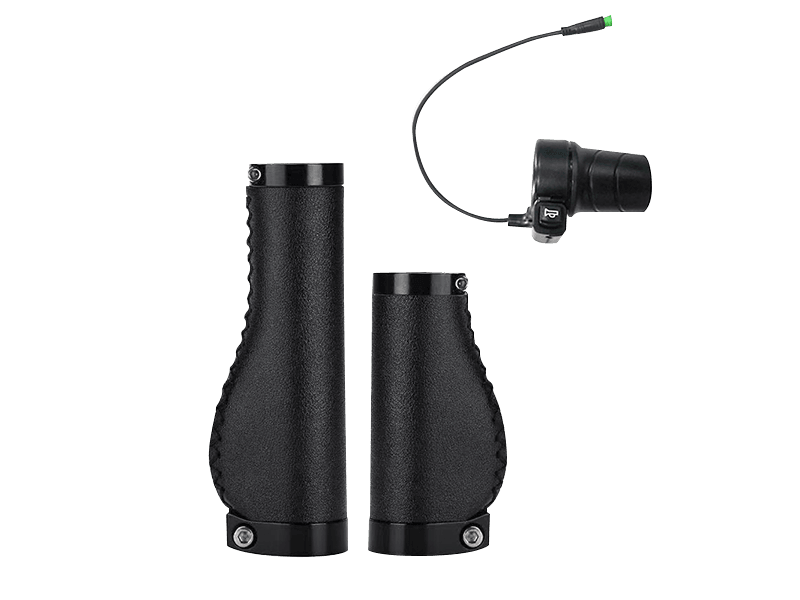
Twist Throttle with Grips
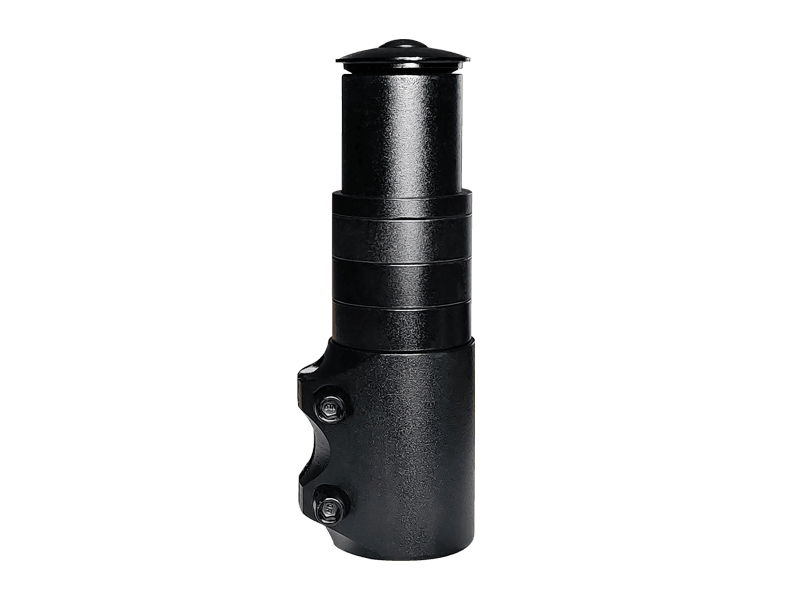
Stem Extender
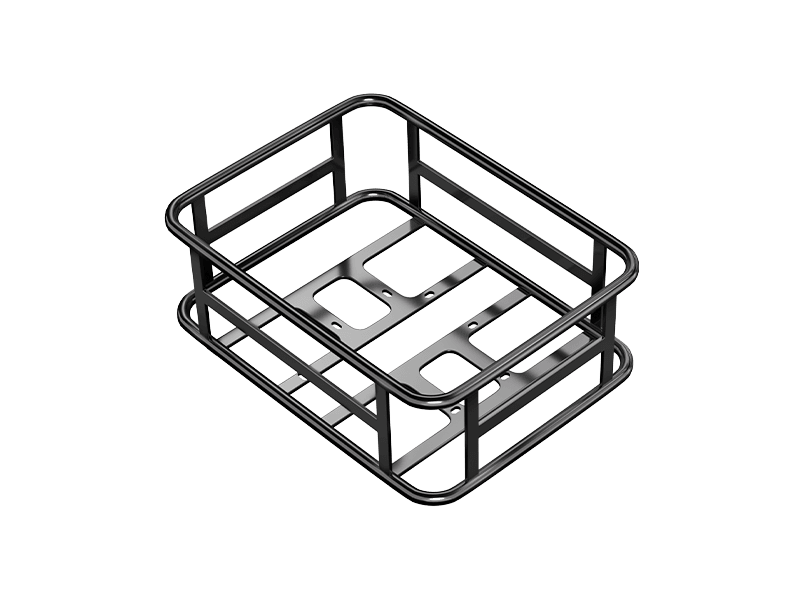
Rear Basket
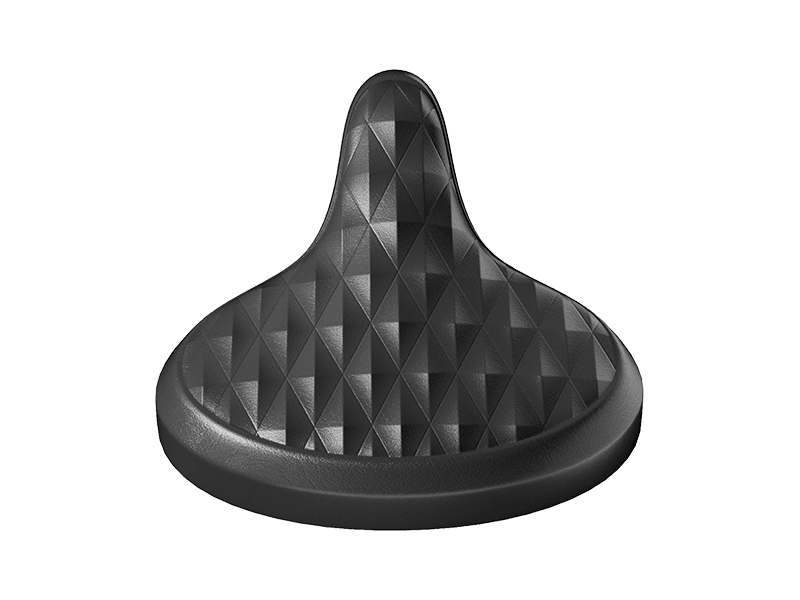
Oversized Comfortable Saddle
There's no item in your cart.
You May Also Like
You're Saving £0.00
Shipping, taxes, and discount codes calculated at checkout.All Topics


Why You Should Consider an Electric Bike
Nov 30, 2025 12:36
The thrill of discovering a new trail, the wind brushing past as you cruise down an open road, the sun warming your face… Or, let’s be honest, maybe you just dislike pedaling up steep hills. Whatever your motivation, researching electric bikes before committing is the smart first step — and you’re here, so congratulations on taking it. In this post, we’ll explore why an electric bike is more than just a mode of transportation. What makes eBikes fun, practical, and increasingly popular? From convenience to adventure, here’s why investing in a FREESKY eBike could change the way you ride. Make Everyday Riding Easier E-bikes are designed to simplify cycling — without removing the fitness benefits entirely. They use modern technology to make commuting, errands, and recreational rides easier and more enjoyable. Key advantages include: - Hills Become Simple: Forget struggling up steep inclines. With a FREESKY motor, you can conquer hills in style and comfort, whether using pedal assist or throttle mode. - Gentle on Joints: Knee pain or joint strain? The electric assist takes the pressure off, letting you pedal lightly while the motor handles the heavy work. - Ride Through Challenging Conditions: Windy streets, light snow, or loose gravel are no longer intimidating. While an eBike isn’t invincible, extra motor power helps you maintain momentum safely. Stay Fit, Feel Energized E-bikes don’t replace exercise — they enhance it. They give you the flexibility to ride further and more frequently, encouraging healthy habits. - Motivation to Ride More: Knowing there’s always assistance available makes you more likely to ride regularly, burning calories and staying active. - Low Impact Cardio: Cycling strengthens your heart and lungs while sparing your joints from harsh impact. - Smart Pedal Assist: Pedal assist keeps your effort consistent, regardless of terrain, so you can enjoy the journey while improving fitness safely. Mountain Biking, Reimagined For those who love trails, an eBike is a game-changer: - Accessibility for All Riders: Steep or technical trails are no longer limited to elite cyclists. FREESKY motors give everyone the ability to navigate challenging terrain. - Arrive Fresh for the Fun Parts: You’ll reach summits with energy to spare, allowing you to enjoy descents and technical sections fully, without exhaustion slowing you down. Fat Tires: The New Standard Fat bikes have redefined off-road riding. Combined with e-bike technology, they deliver unparalleled versatility: - Smooth Comfort: Wide tires distribute your weight evenly, absorbing bumps and offering a more comfortable ride than standard tires. - Stability and Balance: A larger contact patch reduces wobbling and improves confidence on tricky surfaces. - Conquer Diverse Terrain: From sand to snow, mud to gravel, fat tires offer exceptional grip and control, letting you explore with confidence. Why FREESKY eBikes? FREESKY eBikes are designed for riders who value power, reliability, and fun. With full suspension, high-capacity batteries, fat tires, and intuitive pedal-assist systems, our eBikes make every ride an adventure. Whether commuting, exploring trails, or enjoying weekend rides, FREESKY equips you with the performance and comfort you need. Check Deals Join the E-Bike Revolution Electric bikes are more than just transportation — they’re a lifestyle upgrade. Ride farther, tackle hills with ease, and discover new paths without sacrificing fitness. Explore FREESKY’s range today and see why eBiking is becoming the preferred choice for riders worldwide.
Read More

Rediscovering Freedom: A Journey Along Scenic Trails
Nov 30, 2025 12:34
I’m 65 years old and have been working as a multimedia designer for many years. Recently, I rediscovered cycling, and it’s become one of the most fulfilling hobbies I’ve taken up in the past year or so. I live near the quayside of a large river, which is connected to several picturesque waterways, and my Freesky e-bike has allowed me to explore this beautiful area with ease. There’s something about cycling through these scenic routes that brings me a sense of freedom and peace I hadn’t expected. My favorite routes include the towpaths along the canals, winding trails through the countryside, and old railway lines that have been repurposed into cycling paths. One of the most fascinating trails I frequent cuts through marshland, where the landscape shifts dramatically. It’s rugged and wild, with rocky patches and areas used by the military as a firing range. Despite the rugged terrain, it’s also a bird sanctuary, and I’ve often come across wildlife in the most unexpected ways. More than once, I’ve been riding along and suddenly turned a corner to find a group of Canadian geese casually blocking the path, completely unbothered by my presence. It’s funny how they’ve learned to take their time and ignore cyclists, forcing us to wait until they decide to move! The bike itself gets a lot of attention from fellow cyclists and walkers. The Freesky has a sleek, modern design, and I’ve had numerous people stop me to ask about it. It’s a real conversation starter, and I enjoy these interactions—there’s something about sharing the joy of cycling with others who appreciate the beauty of nature and the freedom that comes with exploring the world around us on two wheels. I’m grateful to have rediscovered cycling at this stage in my life; it keeps me active, connected to nature, and engaged with my community in a way I hadn’t anticipated.
Read More

The Rise of Electric Bikes Transforming Urban Mobility for a Sustainable Future
Nov 30, 2025 12:09
Electric bikes are reshaping the way we move through our cities. Combining efficiency, convenience, and eco-friendly design, they are not just a trend—they are a revolution in sustainable transportation. This article explores the benefits of e-bikes, the challenges of adoption, and the future of this fast-growing mobility solution. Why Electric Bikes Are Becoming Essential Across the globe, electric bikes are quickly gaining traction among commuters, outdoor enthusiasts, and eco-conscious individuals. These versatile vehicles seamlessly combine pedal power with motor assistance, making them suitable for city streets, suburban commutes, and weekend adventures alike. The Versatility FactorImagine a bike that effortlessly adapts to your lifestyle: a reliable commuter during the week, a weekend companion for trail exploration, and a practical choice for running errands. Electric bikes offer this flexibility. Their motorized assistance allows riders to travel longer distances and navigate hills with ease, while still promoting an active, sustainable lifestyle. Health and Lifestyle BenefitsE-bikes encourage daily physical activity without overexertion. Pedal-assist technology helps riders gradually increase fitness levels, making cycling accessible to all ages and abilities. By integrating exercise into daily routines, riders improve cardiovascular health, reduce stress, and enjoy more outdoor time—all while reducing reliance on cars. Environmental Benefits of E-Bikes Cutting Carbon EmissionsE-bikes are an environmentally friendly alternative to traditional vehicles. With zero tailpipe emissions and low energy consumption, they help reduce urban air pollution and greenhouse gases. Choosing an e-bike for commuting contributes to a cleaner city environment and promotes sustainable mobility practices. Improving Urban Air QualityCities worldwide face growing challenges with air pollution. E-bikes provide a practical solution by easing traffic congestion and decreasing emissions. As their adoption increases, e-bikes contribute to cleaner air and healthier urban communities. Financial and Health Advantages Cost SavingsE-bikes offer significant financial benefits. Reduced fuel costs, lower maintenance expenses, and no parking fees make them an economical choice compared to cars or motorcycles. Over time, the savings can be substantial while simultaneously supporting environmentally responsible transportation. Boosting Personal Well-beingRiding an e-bike promotes low-impact physical activity. By blending exercise with motor assistance, riders gain cardiovascular benefits, improved mood, and reduced stress. E-bikes also make cycling accessible for longer trips and challenging terrains, encouraging a more active and balanced lifestyle. Tackling Barriers to E-Bike Adoption Addressing Range AnxietyModern e-bikes feature high-capacity batteries and efficient power management, allowing riders to travel longer distances without fear of running out of power. Understanding battery capabilities and proper charging habits helps riders confidently plan extended trips. Prioritizing SafetySpeed management, road sharing, and responsible riding are critical for safety. Wearing protective gear, following traffic laws, and maintaining the bike ensures safe and enjoyable journeys for all. Supporting Infrastructure and Policy Measures Infrastructure DevelopmentWider bike lanes, secure parking, and charging stations make e-bikes more practical and encourage adoption. Cities investing in e-bike-friendly infrastructure create safer, more convenient environments for riders. Government PoliciesSubsidies, tax incentives, and supportive regulations make e-bikes more accessible. Policies that integrate e-bikes into urban mobility plans help reduce congestion, improve air quality, and promote sustainable transportation. The Future of Electric Bikes Innovation in TechnologyAdvanced battery systems, faster charging, GPS tracking, and AI-assisted features are shaping the next generation of e-bikes. Future models may automatically adjust power levels based on terrain and rider behavior, providing an even smarter, more personalized riding experience. Mainstream AdoptionAs technology improves and infrastructure expands, e-bikes are becoming a practical alternative to cars and public transit. They offer a sustainable, cost-effective, and healthy transportation option for cities worldwide. Conclusion Electric bikes are more than a modern convenience—they are a pathway to sustainable, active, and efficient urban mobility. By combining environmental responsibility with health and lifestyle benefits, e-bikes represent a transformative solution for today’s cities. Embrace the e-bike revolution and join a movement that reduces carbon emissions, promotes active living, and delivers endless adventures. The future of urban transportation is electric—and it’s already here.
Read More

Ultimate Guide: How to Clean and Maintain Your Ebike for Peak Performance
Nov 30, 2025 11:57
Keeping your electric bike clean isn’t just about appearance—it’s essential for safety, performance, and longevity. Dirt, dust, and mud can accumulate on your bike during rides, especially on city streets, gravel paths, or off-road trails. If left unattended, this buildup can affect the drivetrain, brakes, and electronics, reducing efficiency and causing wear over time. Step 1: Pre-Cleaning Preparation Power Down and Remove the Battery - Always turn off your e-bike before cleaning. - Remove the battery if possible and store it in a dry area. - Ensure battery contacts and compartment are protected from water. Protect Sensitive Electronics - Remove or cover detachable displays, sensors, and accessories. - If components can’t be removed, wrap them in a waterproof cloth or bag. Choose the Right Cleaning Spot - Pick a shaded, ventilated area to prevent soap streaks or water spots. - Make sure there’s enough room to move around your bike and access water. Gather Cleaning Supplies - Soft brushes and sponges for delicate surfaces. - Two buckets: one for soapy water, one for rinsing. - Mild soap or bike-specific cleaner. - Hose with gentle spray or watering can (avoid high-pressure water near electronics). - Microfiber cloths for drying. - Chain lubricant for post-cleaning maintenance. ⚠️ Avoid strong chemicals or pressure washers—they can damage the bike’s motor, battery, or display. Step 2: Cleaning Process Rinse Off Loose Dirt - Use a damp sponge or cloth to wipe away surface dirt. - Avoid spraying directly on electronic components or bearings. Apply Soap and Scrub - Mix mild soap in warm water. - Start at the top of the bike and scrub downward. - Use separate brushes for tires and rims if heavily soiled. Clean the Drivetrain - Pay attention to the chain, gears, and derailleur. - Use a small brush and rotate pedals backward. - Minimize water exposure to prevent rust. Wipe Electronics Carefully - Lightly dampen a cloth and wipe battery casing, motor, and display. - Do not soak or allow water to drip into openings. Rinse Off Soap - Use a clean cloth or sponge to remove soap residue. - Work from top to bottom, being careful around sensitive areas. Step 3: Drying Your Ebike - Wipe the bike with microfiber cloths, focusing on frame joints and crevices. - Let the bike air-dry in a ventilated area away from direct sunlight. - Tilt or shake the bike gently to remove trapped water. - Finish with a dry cloth to catch remaining moisture. Step 4: Post-Cleaning Maintenance - Reattach the battery and electronics once fully dry. - Apply chain lubricant sparingly, rotating pedals backward. - Wipe off any excess to avoid attracting dirt. - Check tire pressure and inflate to the recommended PSI. - Test brakes, shifting, and motor assist before riding. Additional Ebike Care Tips - Perform regular inspections of brakes, tires, drivetrain, and electronics. - Store your bike in a dry, temperature-controlled environment. - Avoid deep battery discharges and follow manufacturer charging guidelines. - Consider professional servicing annually, particularly for motors and battery systems. Frequently Asked Questions How often should I clean my e-bike? - After muddy or dusty rides, or at least every few weeks for general upkeep. What if water gets into electronics? - Disconnect the battery, dry components, and allow the bike to air-dry completely. Can household cleaners be used? - Mild soap or bike-specific cleaners are safest. Harsh chemicals may damage paint or electronics. How can I protect the bike’s finish? - Applying bike polish or wax helps repel dirt and water and makes future cleaning easier. Best way to lubricate the chain? - Apply bike-specific lubricant to each link while rotating pedals backward, then wipe off excess. By following these steps, you can keep any e-bike performing at its best, extend component life, and reduce the risk of mechanical issues. Regular cleaning and maintenance make every ride smoother, safer, and more enjoyable.
Read More

Why UL2271 Certification is the Gold Standard for Your E-Bike Battery
Nov 29, 2025 14:47
The electric bike revolution is surging, offering a greener, more enjoyable way to commute and explore. But as e-bikes become ubiquitous, a critical concern has ignited alongside them: battery safety. Headlines about e-bike battery fires, often devastating and sometimes tragic, have understandably rattled consumer confidence. In this landscape, one certification stands out as the beacon of safety and reliability: UL 2271. Beyond the Headlines: The Real Risk Lithium-ion batteries pack immense energy into a small space. While generally safe when well-designed, manufactured correctly, and used properly, failures can occur. These failures, often stemming from substandard cells, poor construction, inadequate protection circuits, or physical damage, can lead to "thermal runaway" – an uncontrollable chain reaction generating extreme heat, toxic fumes, and fire. The consequences in a home, office, or apartment building can be catastrophic. Enter UL 2271: The Rigorous Guardian UL 2271, developed by the globally recognized safety science leader UL Solutions (formerly Underwriters Laboratories), is specifically designed to address the unique hazards of lithium-ion battery packs used in Light Electric Vehicles (LEVs), including e-bikes, e-scooters, and hoverboards. It's not a simple checkbox; it's an exhaustive series of tests simulating real-world abuse and potential failure scenarios far beyond basic electrical safety. What Does UL 2271 Actually Test? The certification demands batteries pass a gauntlet of over 20 stringent tests, including: Electrical Abuse: Overcharging, forced discharge, short-circuiting. Mechanical Abuse: Crushing, impact, vibration, drop testing. Environmental Stress: Exposure to extreme temperatures (hot and cold), thermal cycling, humidity. Fire Exposure: Direct flame impingement. Internal Component Failure: Simulating failures within the battery management system (BMS) or individual cells. The goal? To ensure the battery pack: Does not explode or catch fire during or after testing. Prevents thermal runaway from propagating between cells. Contains any fire within the battery enclosure if ignition occurs. Minimizes the release of hazardous projectiles or flames. The "Gold" in the Gold Standard: The Value of UL2271 So, why is UL2271 certification so highly prized? Unmatched Safety Assurance: It provides the most comprehensive, independently verified proof that a battery pack has been engineered and built to withstand extreme conditions and minimize fire risk. It directly addresses the core failure modes seen in real-world incidents. Consumer Trust & Confidence: Seeing the UL 2271 mark allows consumers to purchase and charge their e-bikes with significantly greater peace of mind. It signals a manufacturer's serious commitment to safety over cutting corners. Reduced Risk & Liability: For manufacturers, retailers, and property managers (like landlords or building associations), specifying or requiring UL 2271 batteries drastically lowers the risk of catastrophic failures and associated legal liabilities. Regulatory & Insurance Influence: Governments and insurers are taking notice. Cities like New York are actively promoting or even mandating certified batteries. Insurance companies are more likely to offer favorable terms for devices using UL 2271 certified packs. Market Differentiation: In a crowded market, UL 2271 certification is a powerful differentiator. It elevates a brand above those relying on cheaper, uncertified, or less rigorous standards. It signifies quality and responsibility. Global Recognition: UL is a globally trusted name. UL 2271 certification is recognized and respected internationally as the benchmark for LEV battery safety. Beyond "CE" or Cheap Imitations Don't be fooled by vague claims of "certification" or markings like "CE" (which primarily indicates conformity with EU electrical safety standards, not specific rigorous battery abuse testing). Cheap batteries often carry counterfeit marks or only meet minimal requirements. UL 2271 is specific, demanding, and independently verified. Look for the official UL Mark listing the certification number. The Bottom Line: Non-Negotiable Safety As e-bikes integrate deeper into our lives and urban infrastructure, battery safety cannot be an afterthought. UL 2271 certification is not just a "nice-to-have"; it's rapidly becoming the essential foundation for responsible e-bike ownership, manufacturing, and regulation. When buying an e-bike or replacement battery, demand UL 2271 certification. It's the most significant investment you can make in the safety of yourself, your home, and your community. It’s the gold standard for a reason – it signifies a battery built to power your ride, not a potential disaster. Choose wisely, choose certified, choose UL 2271. Look for the Mark. Ride with Confidence.
Read More

UK Road-Legal Riding: Real Stories from FREESKY E-Bike Owners
Nov 27, 2025 10:03
Warrior Pro Real-World Test in the UK: Will You Actually Get Stopped by the Police? 500+ Days of Riding Experience from 6 UK Owners** If you’re choosing an e-bike for use in the UK, you’ve probably had the same concern many riders do:“With the 250W limit and 25 km/h assist cap, will a powerful bike like the Warrior Pro attract police attention?” Good news — we collected real feedback from 6 UK Warrior Pro owners and cross-checked it with UK EAPC regulations.Here’s the truth, based on over 500 days of real riding: 👉 If you ride in compliance mode, Warrior Pro can be used legally on UK public roads — without issues. First: The 3 Core Requirements for a Legal E-Bike in the UK Before we dive into rider experiences, here’s a quick refresher on what the UK government requires for a road-legal EAPC (Electrically Assisted Pedal Cycle): Motor output must not exceed 250W, and electrical assistance must cut off at 25 km/h (15.5 mph). Pedals must be functional, and the rider must be pedalling to receive assistance. No licence, registration or insurance is required, and the minimum age is 14. Key point:Warrior Pro is designed for the EU/UK market.When used in speed-limit mode, the bike keeps output ≤250W and cuts assistance at 25 km/h — fully compliant with UK EAPC rules. Although the UK now uses the UKCA mark instead of CE, compliant EAPC models remain fully recognised. There is no conflict. Real Rider Reports: What Are the Chances of Being Stopped by Police? Based on feedback from riders across London, Manchester, Devon and other regions — covering both urban and rural use — here’s what we found. 1. City Commuters: Zero Issues Even When Passing Police Mark Gilbert (England):“I ride my Warrior Pro everywhere. When the limiter is on, nobody pays attention. A police officer once looked at my bike and said it looked nice. Just don’t overspeed — ride in compliance mode and you’ll never have trouble.” Brett Jennings (Manchester):“I use the Alaska Pro. I always switch on the limiter on public roads. Once during a road diversion I spoke directly with a police officer — he checked that I had pedals and proper gear, then waved me through. They focus on illegal bikes, not legal EAPCs.” Yung Henney (London / Manchester):“In big cities police may glance at you, but as long as you ride normally they ignore you. I’ve ridden past police multiple times — they’re far more concerned about Surron-style bikes being ridden illegally. In Leeds city centre I even slow down to 15.5 km/h just to be extra safe.” 2. Suburban & Rural Riders: Riding Legally Means Being Invisible James Nelson (Devon):“I keep the limiter on all the time. Even when police drive past, they don’t care. The bike looks big, yes — but if you ride legally, you’re not on their radar.” Joe Ingham (England):“The trick is: don’t wear full face coverings, don’t use throttle-only mode, don’t overspeed. We often ride to the pub and pass police — they just say hello. Never been stopped.” 3. Special Situations: Even When Noticed, Compliance Mode Clears Everything Majid Ali (England):“I’ve ridden my Warrior Pro for nearly a year. Once I stopped at a junction and a police car slowed down to look. They saw the pedals and helmet, realised it was an EAPC, and drove off. When passing police now I switch to PAS 0 and pedal — absolutely no issues.” Why UK Police Don’t Focus on Legal E-Bikes Based on rider reports and UK police statements, enforcement priority is very clear. Police typically focus on: Electric motorcycles/scooters without pedals — treated as uninsured motor vehicles. Overspeeding above 25 km/h, dangerous riding or traffic violations. Suspicious appearance (full masking, riding aggressively). Throttle-only illegal bikes or models without limiters. A Warrior Pro ridden in legal mode, with pedals and proper safety gear, avoids every single enforcement trigger category. 👉 This is why compliant riders almost never get stopped. Top 3 Tips for Zero-Risk Riding in the UK To make your experience even smoother: Before riding:Confirm that limiter mode locks the bike to ≤250W and 25 km/h. While riding: Keep the limiter on Maintain ~24 km/h to stay comfortably under the assist cut-off Wear a helmet and normal riding gear Avoid face coverings or anything that looks “motorcycle-like” If approached by police:Be polite, show the pedals, and explain:“This bike is set to EAPC-compliant mode for UK roads.” Final Verdict: Is the Warrior Pro Worth Buying in the UK? Absolutely — yes. The real-world experience of six UK riders shows that: Riding in compliance mode keeps you fully within UK EAPC rules The chance of being stopped is extremely low Warrior Pro’s performance, build quality and versatility make it ideal for both commuting and weekend rides If you want a powerful bike but worry about legality, these rider stories are your best reassurance: 👉 Ride legally, ride confidently — and enjoy the full Warrior Pro experience.
Read More
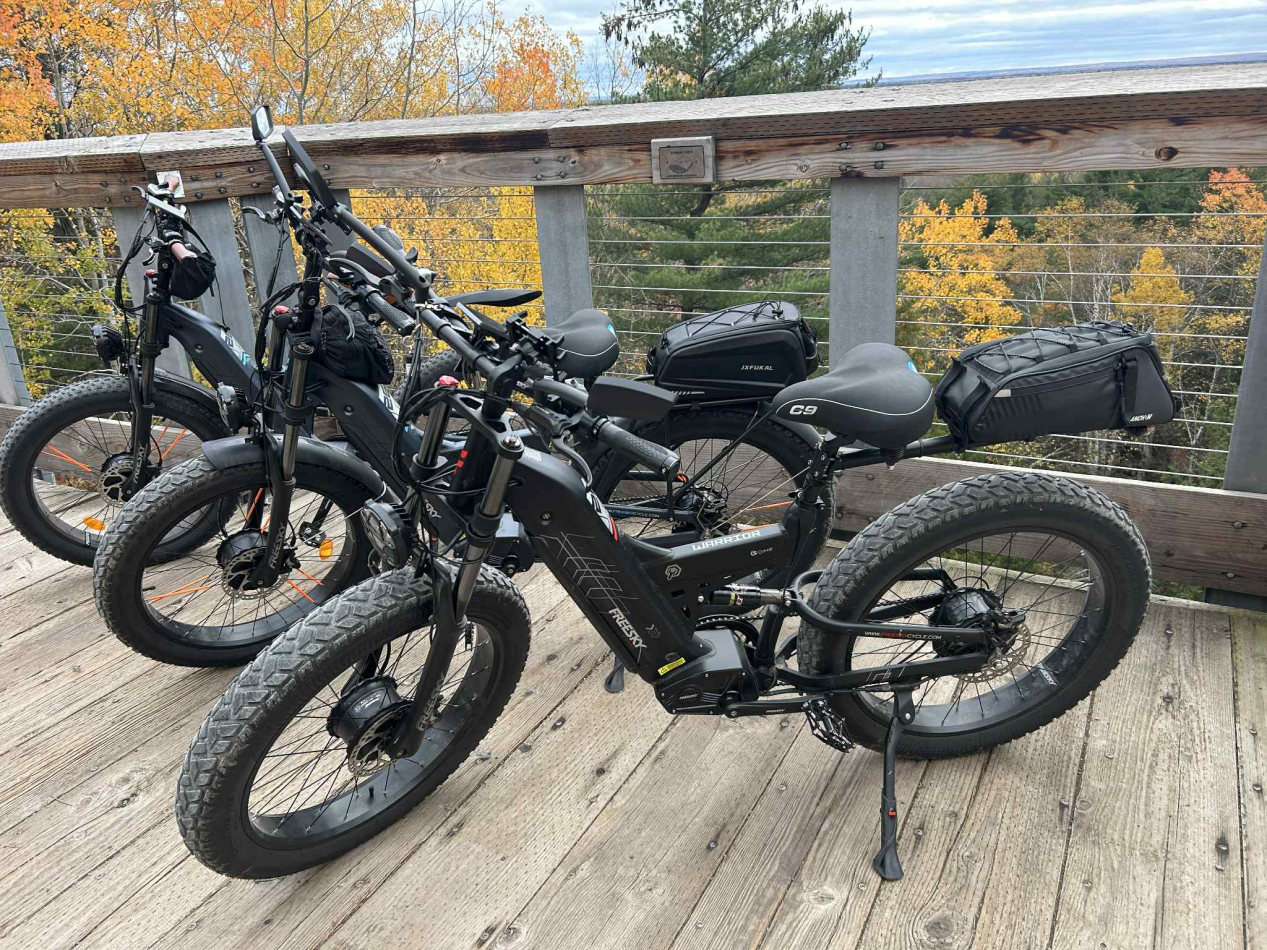
Finding Freedom on Two Wheels: A Property Manager’s Cycling Journey
Oct 28, 2025 02:33
At 58, I’ve spent much of my life managing properties — seven buildings and 180 apartments, to be exact. It’s a role that demands patience, attention to detail, and a steady hand. Over the years, I’ve come to appreciate the small victories that keep everything running smoothly and the satisfaction of creating a place where people truly feel at home. But outside the world of maintenance schedules and resident calls, I’ve found another kind of balance — on two wheels. Biking has become more than just a pastime; it’s a form of therapy, a source of peace, and a reminder that there’s always something new to explore. Every ride tells its own story. Some days take me along quiet backroads lined with hedgerows and open fields; others lead me down forest trails or into vibrant towns I might never have visited otherwise. Each journey adds something special to life — a new perspective, a fresh breath of air, and a renewed sense of appreciation for the world around me. What began as a simple way to stay active has grown into one of the most meaningful parts of my life. Biking keeps me grounded, curious, and connected — to the road, to nature, and to myself. If you’re looking to rediscover that same sense of freedom and adventure, take a look at our latest collection of bikes and accessories — and start your own journey today. Explore All E-Bikes
Read More
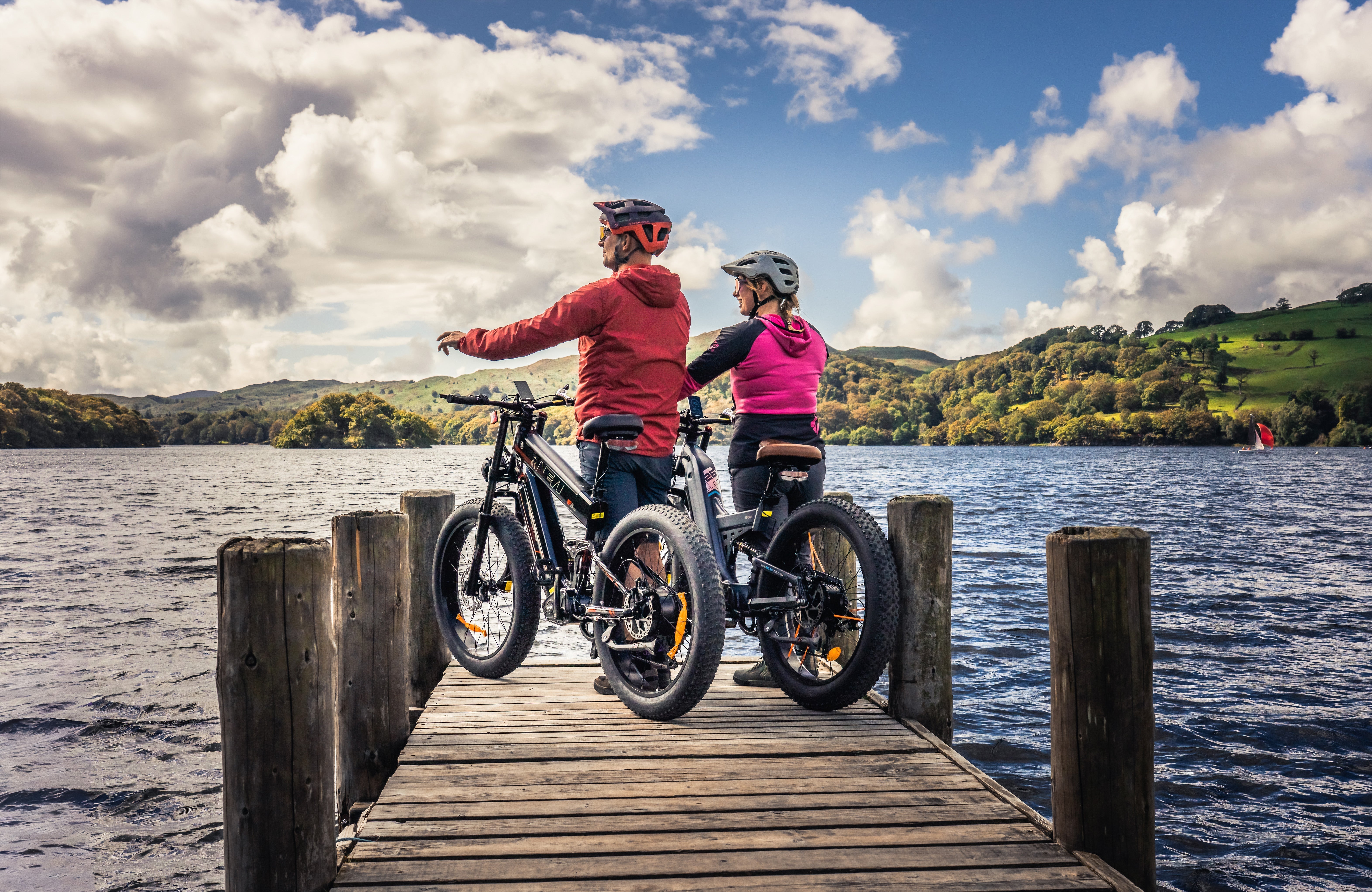
What’s the Difference: Electric Bikes vs Regular Bikes
Oct 28, 2025 02:15
What’s the Difference: Electric Bikes vs Regular Bikes Cycling has always been a popular way to stay active, commute, and enjoy the outdoors in Europe. With the rise of electric bikes (e-bikes), many riders are asking: What’s the real difference between an e-bike and a regular bike? Let’s break it down. Quick Comparison: E-Bikes vs Regular Bikes Feature Electric Bikes Regular Bikes Power & Assistance Motor + battery provide pedal assistance, reduce effort on hills and long rides 100% powered by your legs Speed EU-regulated up to 25 km/h pedal assist Depends on rider fitness Range 144-257 KM (90-160 Miles) per charge; Alaska M-520 offers dual batteries for extended range Limited by rider’s endurance Fitness Impact Still burns calories, encourages longer rides Higher physical workout intensity Cost Higher upfront, saves money on commuting and transport More affordable and cheaper to maintain Sustainability Eco-friendly, ideal for replacing short car trips Zero emissions, simple green mobility 1. Power and Assistance Electric Bikes: Equipped with a motor and battery, e-bikes provide pedal assistance. This means when you pedal, the motor kicks in to make the ride easier—whether you’re climbing hills, carrying groceries, or riding long distances. Regular Bikes: Powered solely by your legs, regular bikes require more physical effort, especially on steep roads or longer commutes. 👉 European context: Cities like Amsterdam, Berlin, and Paris are embracing e-bikes for commuting because they reduce physical strain while still keeping the cycling culture alive. 2. Speed and Range Electric Bikes: Most e-bikes in Europe are limited to 25 km/h pedal-assist speed, in line with EU regulations. Depending on the battery, ranges can go from 144 km to over 257 km per charge. For example, the Alaska M-520 comes with dual batteries, giving riders extended range and confidence for both daily commutes and weekend adventures. Regular Bikes: Speed depends entirely on the rider. Great for exercise, but not always practical for long or hilly routes. 3. Fitness and Lifestyle Electric Bikes: Contrary to the myth, riding an e-bike still burns calories. Riders tend to cycle longer and more often because the motor makes it enjoyable and accessible. Regular Bikes: Offer a more intense workout since every movement is powered by your own strength—ideal for sports, fitness training, and traditional cycling enthusiasts. 4. Cost and Maintenance Electric Bikes: Higher upfront cost due to motor and battery technology. Maintenance also includes checking the electrical system. However, the long-term savings from replacing car trips and public transport can be significant. Regular Bikes: More affordable and simpler to maintain, though limited in terms of distance and convenience. 5. Sustainability and Urban Mobility Both e-bikes and regular bikes are eco-friendly alternatives to cars. The difference? E-bikes make sustainable commuting accessible to a wider audience, including older riders or people living in hilly areas. Regular bikes remain the simplest, zero-emission option. Final Thoughts The choice between an electric bike and a regular bike depends on your lifestyle. If you want effortless commuting, longer trips, and a way to replace short car journeys, an e-bike is the smarter option. The Alaska M-520 is a perfect example, designed with a dual-battery system for riders who value extended range and reliability. If you’re looking for a budget-friendly workout or occasional rides, a traditional bike may be enough. In Europe’s push toward green mobility, e-bikes are quickly becoming the preferred choice for urban commuters, weekend riders, and anyone who values comfort with sustainability.
Read More
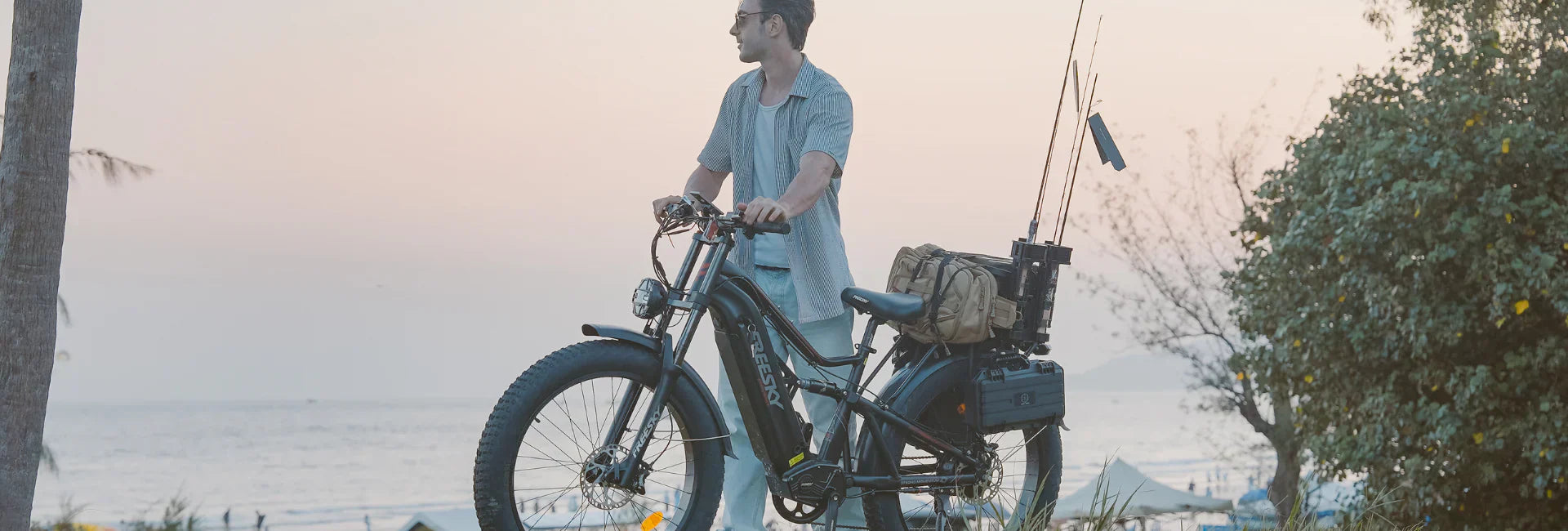
Difference Between Step-Through and Step-Over Electric Bikes
Oct 28, 2025 02:15
Difference Between Step-Through and Step-Over Electric Bikes When shopping for an electric bike, one of the first choices you’ll encounter is the frame design: step-through vs. step-over. While both types provide excellent riding experiences, their designs serve different needs and preferences. Understanding the difference between these two e-bike styles will help you choose the one that fits your lifestyle best. What Is a Step-Through Electric Bike? 🚲✨ A step-through electric bike features a low or absent top tube, making it easy to “step through” the frame to mount the bike. Key features: Low standover height Upright, relaxed riding position Easy to mount and dismount Best for: Riders who value comfort and convenience Older adults or people with limited mobility Urban commuting with frequent stops Pros: Easy to get on/off—even in work clothes or dresses Comfortable posture for casual rides Great for city commuting Cons: Slightly heavier frames May feel less rigid for aggressive riders What Is a Step-Over Electric Bike? ⚡🚴 A step-over electric bike, also called a diamond frame e-bike, has a traditional high top tube. This design is strong, stable, and common in mountain and road bikes. Key features: Higher standover height Sportier riding posture Stronger frame design Best for: Riders who prefer performance and speed Off-road, mountain, or long-distance riding Those who are comfortable swinging a leg over the frame Pros: Strong and durable frame More responsive handling Better for rough terrain and higher speeds Cons: Harder to mount/dismount, especially for shorter riders Less convenient for stop-and-go city rides Step-Through vs. Step-Over: Which One Should You Choose? 🤔 When deciding between a step-through e-bike and a step-over e-bike, consider your: Comfort needs → Choose a step-through for easy access and upright posture. Riding style → Choose a step-over if you value performance, speed, or off-road ability. Lifestyle → Commuters and casual riders often prefer step-throughs, while sporty or adventure riders lean toward step-overs. 👉 In short: Step-through = comfort & convenience. Step-over = performance & durability. Final Thoughts 🌟 Both step-through and step-over electric bikes have unique advantages. The right choice depends on your comfort preferences, riding environment, and style. If you’re looking for ease of use and daily commuting convenience, go for a step-through e-bike. If you want strength, speed, and versatility for challenging rides, the step-over e-bike is your match. Whichever you choose, proper maintenance and regular care will keep your e-bike performing at its best.
Read More